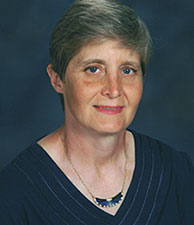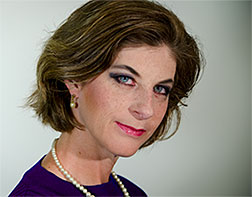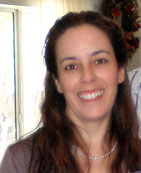The Write Brain
By Tori Walters
Are you in your write mind? In this day and age, so many people are caught up in the analytical, find-a-solution mindset that when one tries to sit down to write, nothing happens. This is because we are too wired into our left-brain thinking to allow right-brain activity and creativity. This can lead to frustration, anxiety, and what may only be perceived as writer’s block.
I have read many articles and blogs that are about getting over or through writer’s block, but few have discussed the option of brain exercises to redirect to right-side thinking.
The methods of retraining your brain for creative purposes can help exponentially in our writing life. Like everything else in our lives, we need to have balance. When one thing is out of sync, we find ways to rectify it. Our brains work the same way. For optimal use, we need brain balance. We can use the left side to sequentially set our story, but we also need the right side to assert the creative aspect—or no one reads our writing! Take a few minutes in your day, before or during your writing, to practice some of the techniques below, and this should help to get your brain balanced and in sync.
We Are Where We Are
Everyone knows that if you are unhappy, hang around happy people, and you will become happy, too. It works the same way with negativity: if you are positive and hang around negative people, you will become negative, too. We can use this theory to our advantage by hanging around other writers—nothing new there—but extend that to artistic people in general, and we can stimulate our right brains for creativity. Being in a creative environment can rub off on us and rewire our brains for the type of thinking we need to be able to write and create. This also helps us to better think outside the box.
Some examples of creative environments are:
- Go to an art exhibit and pick a painting or piece. Imagine the process from start to finish.
- Visit the local farmer’s market. What way can you cook a new vegetable?
- Watch a ballet performance of a familiar story. While watching the story unfold, describe how the dancer is interpreting it.
- Watch ducks in a pond. What are their names? What kind of daily lives do they lead?
Being in a general artistic environment opens our thinking to more creative avenues than that of just writing. We may be able to think of a new plot twist or maybe just a different profession for one of our characters.
My personal favorite: meditate. Just sitting in some quiet can calm the mind enough to help us out in times of a creative drought. I found a quote once on Writer’s Digest’s website that said, “Stillness is the native language of creativity.” It’s nice to know I don’t have to think of something for the waters to start flowing. I can just be.
So all of this may beg the question: What is creativity and why is it sometimes so hard to come by? Why does the brain work or not work the way it does?

“Unusual behavior is not always creative, but creative behavior is always unusual.”
(Photo: Susan Selvey)
A Little to the Left
Let’s start with a definition of creativity from Dictionary.Reference.com: “The ability to transcend traditional ideas, rules, patterns, relationships, or the like, and to create meaningful new ideas, forms, methods, interpretations, etc.” So, how do we work with this wonderful side of ourselves?
Through my interviews with two experts in the psychology field, Susan Selvey, who has a master’s degree in clinical psychology, and Dr. Bill Elmore, PhD in clinical psychology and education, I have been able to decipher some information that could help us out. According to both Ms. Selvey and Dr. Elmore, left- or right-brain activity is innate.
Let’s say you are a banker but want to switch careers to creative writing. In your banking occupation, you’ve been using your left brain for the analytical logical reasoning. For creative writing, you will need your right brain for dreaming up those wonderful plots to make your story. This is where you will need the above mentioned exercises to make the transition a little easier.
If you are persistent, stubborn, and really want to enhance right-brain activity, finding a mentor may be another solution. For this purpose, the mentor would essentially be your “creativity teacher” to guide you in the right direction. Your mentor may use positive reinforcement, having you behave in outrageous ways, then rewarding that behavior, sort of like a creative boot camp.
It may sound juvenile, but positive reinforcement works on adults as well as children. According to Ms. Selvey: “Reinforcement of basically more and more outrageous behavior. The more you reward, positive reinforcement, the more unusual behavior you’re going to get. You won’t get creative behavior in the whole process, but in general you have to reinforce all unusual behavior; and from there, you can steer a person to more creative behavior. Unusual behavior is not always creative, but creative behavior is always unusual.” (This is now my favorite quote). Some behaviors may include:
- Having to sit in a certain chair in order to write
- Using only one certain pen/ink for tasks: lists in blue, notes in black, edit in red
- Perform a ritual, like Orhan Pamuk, who used to leave his home in the morning, walk around the block, walk back into his front door, and go to work in his office
Interesting, huh? [See Why Weird Writing Rituals Work for more examples of outrageous behavior.]
In Sync
Writing is more than just finding words to put on a page eventually weaving a story. We have to add the elements we “see” in our minds to translate to the reader the way a character looks; what that character sees, hears, feels; and explaining what we normally perceive in the unspoken context.
For example, we physically see a woman, and we can tell if she’s sad or angry by the way she’s acting. We also might be able to tell to what degree she’s feeling these emotions. However when writing about our characters, for our readers to understand, we need to find words to convey what she’s feeling and how intense.
Social cues also play a part. When we are speaking with someone and the person continues looking away, we know this to mean the person is bored or distracted. But in our writing, we need to find words to convey this to our readers.
This is where the creativity factor comes in. We have to reach further within to be able to explain that unspoken portion. This can take a lot of work! This is why it is imperative to exercise the right side to draw out the specific words and phrases that we need to fill our stories.
The brain is a fascinating instrument, capable of reasoning, thought, and decisions; but sometimes, it needs some help in the direction of abstract thought. People use the brain for healing, calming, understanding, prayer, and all kinds of activities. Since both hemispheres work in tandem, I believe there is a way to balance both sides equally enough to “call up” the more creative aspect and the logical side when needed. Sounds like a super power, doesn’t it?
Let’s pretend we want to write a story on the brain. But, it won’t be strictly an academic study. We’re going to add some creativity and spice it up a bit.
Let’s begin:
It’s been said that we have tapped only 10 percent of our brain’s capabilities. What’s with the other 90 percent? No one knows—yet—but doesn’t that in itself sound like a fascinating story? If we look at brain studies, all gazillion of them, we will find out that numerous conclusions and educated guesses have been made as to the brain’s functioning. Neurons are firing off at lightening speed in different directions, depending on what needs to be communicated and where.
Now let’s put the brain to use. If the brain were writing its own story, it might look something like this:
The left side: I am full of axons or lines that communicate to the body. I tell the body what to do and when to do it. I am very precise in my timing. I also keep track of the decision-making capabilities and make sure we stay in line and on time with our day and lives.
The right side can’t leave things alone, so it’s going to spice things up a bit by creating a whole new world out of this brain. First, the brain becomes a planet. Those axons become roads, where futuristic cars travel. The neurons are now shooting stars.
When we put both stories together, we create this: The planet Braintonium is a place of constant shooting stars, where cars not of this time travel on lines through the air.
See what I mean?
Bouncing back and forth between the hemispheres can also be helpful if you can reach that point in your writing state. Mine happens when I begin journaling about everything and nothing and move on to the “business writing” I have to do. Something lights up, and I have a good idea, or at least a thought, that I jot down some where for near-future use. To me, it kind of feels like tossing a ball back and forth from one hand to the other.
The brain can be a wonderful tool to work with but not against. Practice and become more efficient with your right (write) mind.
***

Tori Walters is a freelance writer, living in Ladson, South Carolina, near Charleston. She has a blog emphasizing empowerment of women on the online version of Skirt! Magazine and a Creative Corner blog on my Virtualosity business site. She is also a virtual assistant, photographer/videographer with her husband, a wife of sixteen years, mother to two dogs and a horse, and all around keeper of the family.
-----
Enjoyed this article? You may also like:
Making Time for Right- and Left-Brain Writing
Why Weird Writing Rituals Work
Creative Brainstorming for Writers
-------------------------------------------------------------------------------
What’s Holding You Back? Break Free by Retraining Your Brain
By Robyn Chausse
Writers are a unique group; we continually push ourselves through situations that make most people shudder—all in pursuit of our “personal best.” After forcing ourselves to swallow criticism, persevere through rejection, and wedge through any doorway slightly ajar, it’s no surprise that when it comes to our own psyche, we keep on pushing. Procrastination, writer’s block, and other shortcomings—instead of always having to “push through” what we feel are our weaknesses, wouldn’t it be nice to break free of them? I talked with two experts who say that we can!
Morry Zelcovich is a certified brainwave entrainment engineer. The creator of The Morry Method TM, Zelcovich is considered one of the leading experts in the field of brain entrainment.
Kelly L. Stone is a licensed therapist and professional counselor. She is the author of several books, including Thinking Write: The Secret to Freeing Your Creative Mind.
It’s All in Your Head
We all know the four brainwave patterns of Beta, Alpha, Theta, and Delta. These waves are the pulse rates or binaural beats as measured in hertz (Hz). The greater the cycles per second, the more alert our state. These four states are always present with one wave being dominant. At various stages of life, we tend to stay more in one state than another.
Our life begins more in a Delta state, where we take in information with no questions or reasoning—only acceptance. As we grow through toddler stage and up to age six or eight, we spend more time in Theta state. This is when we are learning how to relate to others and to our environment. Beliefs about us, our place in society and within our family, the dangers awaiting us, and how to cope are all programmed at this young age. After age thirteen, we function mostly in Beta state, our usual “thinking mode,” with Alpha being our “relaxation mode.”
By the time we reach adulthood, the programming is complete. We accept our bad habits or shortcomings and sometimes create little tricks for working with them. Procrastinators give themselves a due date two weeks early; “blocked” writers turn to timed writings or prompts; self-doubters find a safe venue and rarely venture forth. What if we changed our beliefs instead of living with them?

“Persistence and consistency is the key. This is how the junk got in there, through repetition; so repetition is the key to reprogramming.”
(Photo: Kelly Stone)
Breaking the Cycle
You’ve probably heard the phrase: “Neurons that fire together wire together.” This is what we’re talking about. Every stimulus to the brain results in a chemical reaction. Repetitive learning creates a pathway or loop—a repeated chemical reaction. One example would be a child writing poems to share with a parent. If the parent repeatedly wads up and throws away these poems, the resulting pathway might link writing to feelings of low self-worth, depression, or fear. All of this happens in the reactive areas in our brain below the level of conscious thought.
“We start with a clean slate, and then get told the rules,” says Zelcovich. “If something is not functioning well, change the content. Look at what is not working. Using the same learning method, mimic what created the content and change the tread.”
Stone agrees. “The subconscious mind is neutral; it believes anything it’s told, and so that’s where the problem comes in. Children typically don’t know the difference, and that is why some people have such issues when they come into adulthood. The subconscious mind has been given incorrect information or inaccurate information; but because the subconscious mind doesn’t know the difference between good or bad, it just takes everything at face value, so you have to start working with that and changing it.”
To begin working with these subconscious programs, Stone suggests we keep a notebook of our automatic, negative thoughts for a couple of days. Make an entry each time you catch your negative self-talk. You’ll be looking for patterns. For instance, if you see statements such as, “I could never do that”; “I wish I could write like that”; and “That’s too scary,” they may be pointing to a confidence issue. Choose two or three issues to work with and turn them around to reflect your chosen belief.
Next, use whatever learning method works best for you (visual, aural, etc.) and repetitively place these affirmations in your reality. If prior experience with vision boards or affirmations were fruitless, it is probably either that you were not targeting the issue, or you were not working directly with the subconscious.
Between where you are and your desired end result is a “loop” or glitch inhibiting your progress—that glitch is where you should focus. Instead of saying, “I’m a successful, published author,” target the contrasting thought or feeling that comes up when you state that. The child with the poems from the example above might choose: “I clearly express interesting ideas that others enjoy reading. I enjoy sharing my work, and others enjoy reading it.”
Armed with your list of targeted affirmations, create your tools using the learning method most beneficial for you. You may choose to read the affirmations into a recorder for playback or rewrite them each night before going to bed. Remember the Theta state, where our young minds took in all the subconscious programming? Theta is also our first stage of sleep. Stone suggests, “That going to sleep at night stage—that in between awake and asleep stage is a very good time to reprogram the subconscious.”
How long does it take to reprogram? According to Stone, it depends on various factors: “Persistence and consistency is the key. This is how the junk got in there, through repetition; so repetition is the key to reprogramming. Though the time needed before change is seen is different for each person, just by the act of communicating with the subconscious mind and learning how to use the power of it for betterment, people feel better. It’s a resource that goes untapped. Everybody has heard the saying, ‘We only use ten percent of our brain.’ This is what that is referring to. People are not consciously tapped into their subconscious mind.”
Zelcovich suggests we can speed up the process by focusing on neuroplasticity—changing the brain physically and neurologically. He says, “We’re talking about a neurochemical loop. To break the cycle, we need to change the brain chemistry, or neurochemistry, causing the problem.”
Brain entrainment entails using tones and binaural beats to reach into the subconscious and break this cycle. Binaural beats are the pulse rates or waves of the four states of consciousness. Measured in hertz, they range from thirteen to forty cycles per second in Beta, down to one-half to four cycles per second in Delta. Our subconscious is most accessible in Theta (four to seven cycles per second) or Delta. Zelcovich says, “Tones change the frequency the neurons fire at, which changes the brain chemistry helping us break the loop. We feel different emotionally and can now reprogram from a different place.”
Once we are accessing the subconscious, it is merely a matter of holding our desired outcome lightly in our minds, while relaxing for fifteen to thirty minutes two or three times per day. People who have worked with binaural beats report seeing results in a matter of weeks.
Whether you write your affirmations, listen to audio tapes, or use a vision board, the important thing is to engage with your tools on a regular, daily basis. Just make this part of your usual routine. “When the subconscious programming starts changing, people will know because there will start to be outward manifestations of that new, good program,” says Stone.

“If something is not functioning well, change the content.”
(Photo: Morry Zelcovich)
How to Reprogram:
Step one: Become more consciously aware of your negative thoughts and feelings. You might want to keep a notebook for a few days to catch patterns.
Step two: Choose two or three patterns or issues to work with. Think of how you could best create positive affirmations targeting these issues.
Step three: Create your tools. You may want to craft a vision board, write a list of affirmations to meditate with, or record your affirmations to listen to as you fall asleep.
Step four: Develop a new, daily routine. You need to spend time with your tools each day—like brushing your teeth. This time should be undisturbed, allowing you to enter a deeply relaxed state.
Step five: Live like you’ve already changed. By consciously choosing to change, you’ve already begun your journey and you’re just waiting for the changes to be your new default program.
***

Robyn Chausse has been a contributing blogger at WOW’s blog, The Muffin, for three years. A freelance writer and lover of all things “artsy,” Robyn invites you to join her for some creative fun at her new site, Museiddity.com, or visit her writing studio at RobynChausse.com.